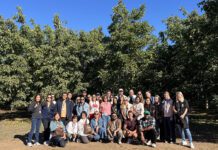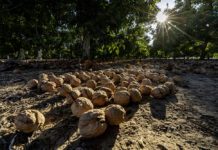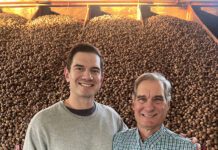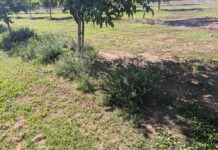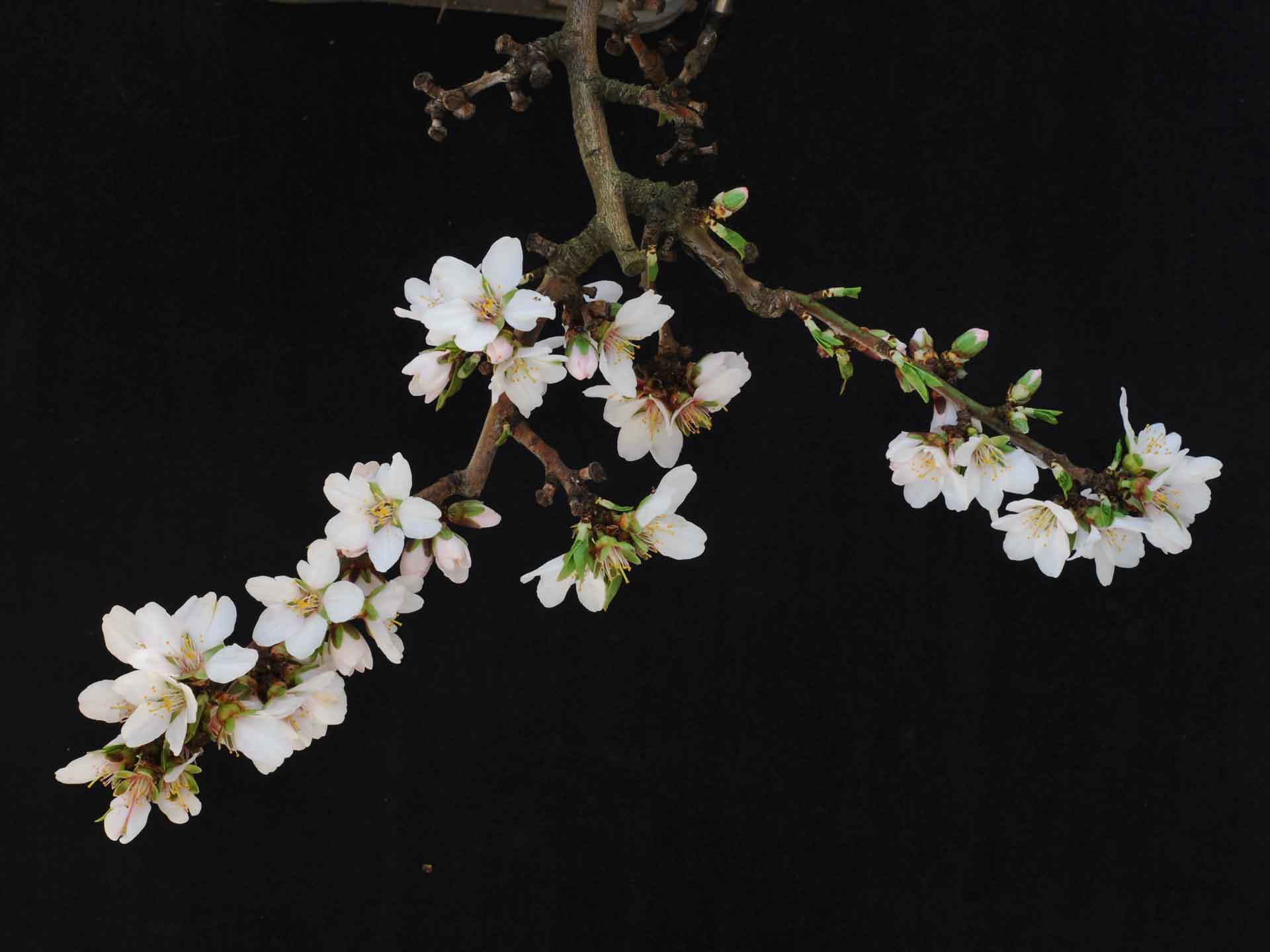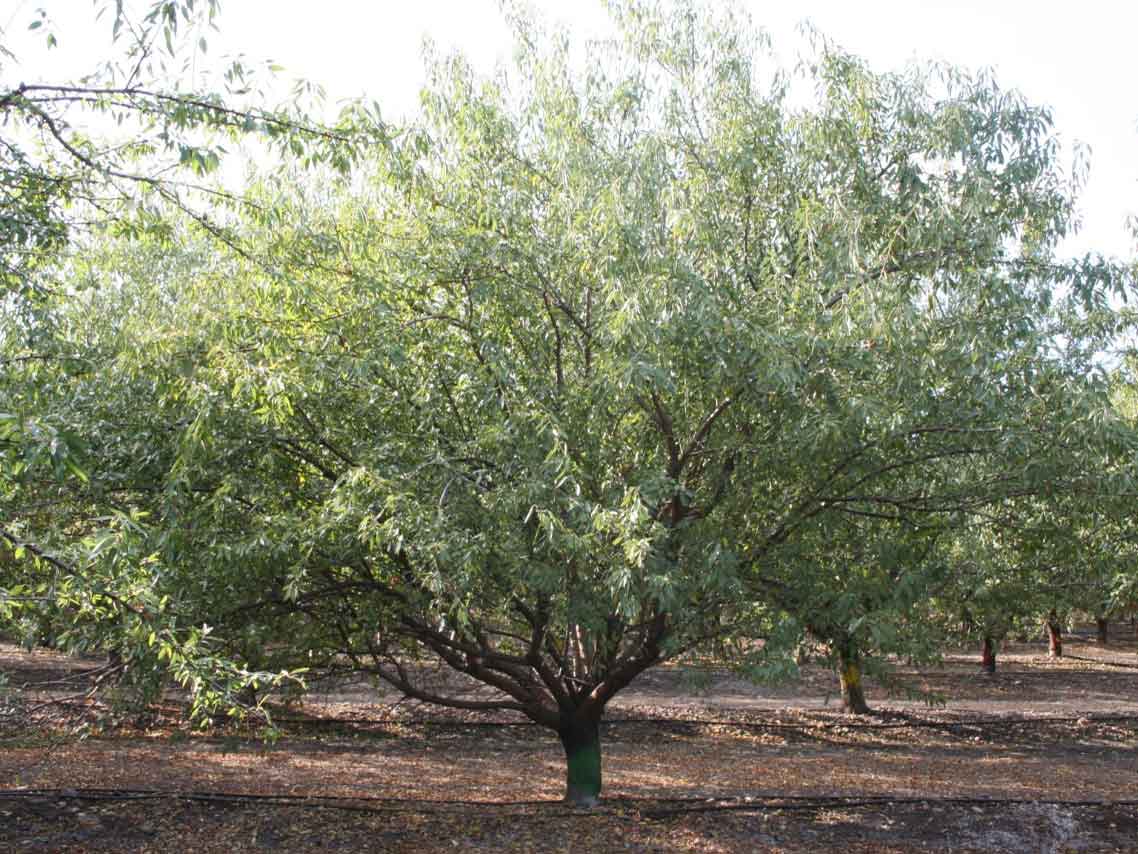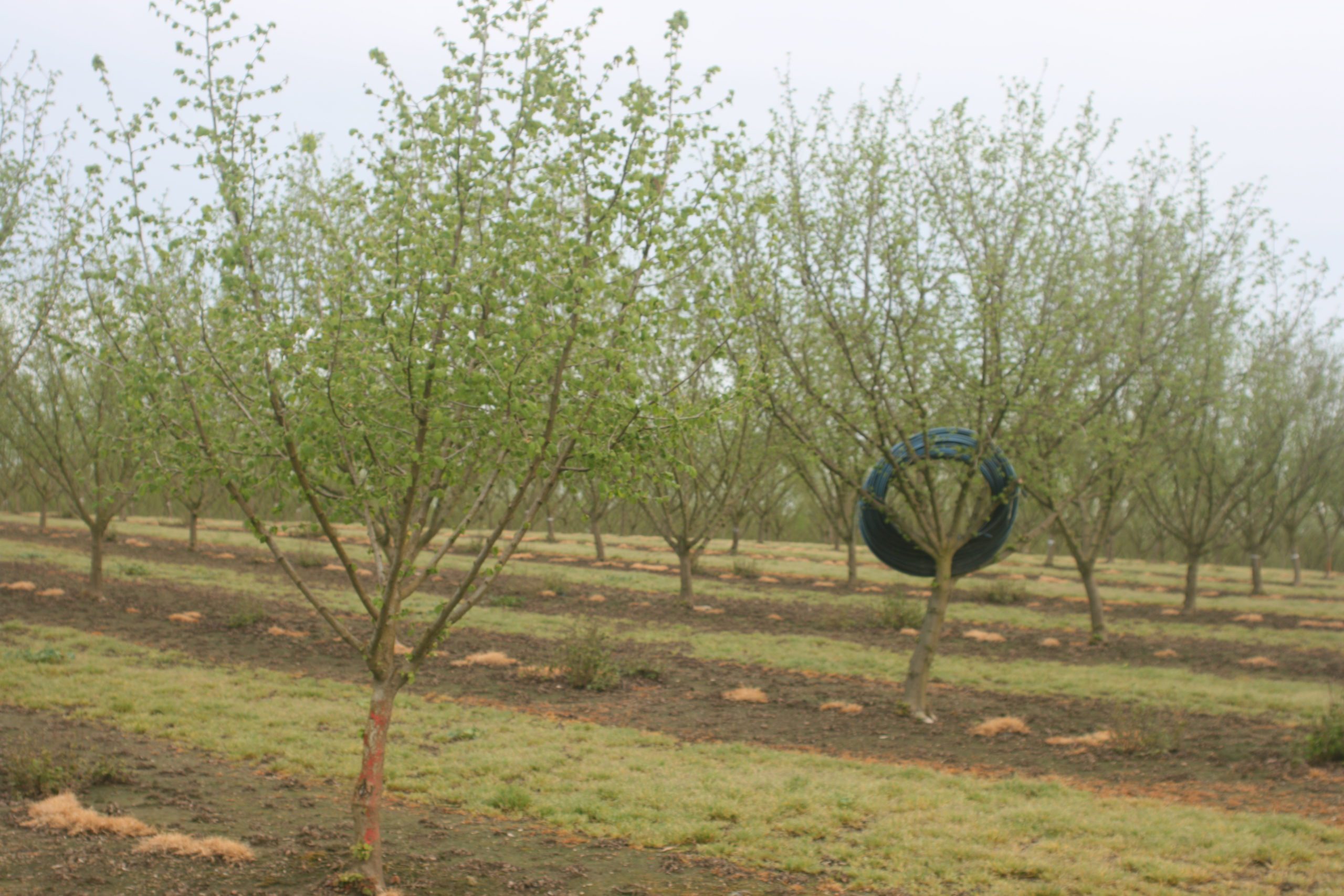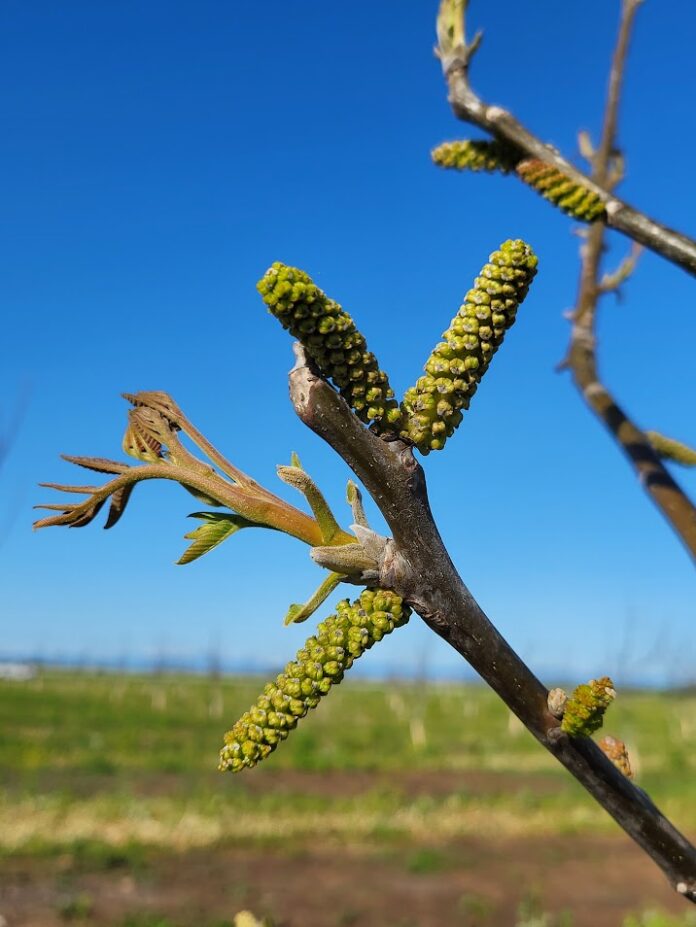
In a Nutshell: Listen to the Summary
Resilience of the California walnut industry is reflected in ongoing variety trials. Markets may still be tough, but growers, UC researchers and the California Walnut Board and Commission are working together to identify walnut variety traits that can sustain the industry for future generations.
One of the several ongoing variety trials is on the California State University, Chico farm, where 20 new walnut selections were planted in May 2023.
Becky Wheeler-Dykes, UCCE orchard systems farm advisor in Glenn, Colusa and Tehama counties, said the Chico State site was chosen to determine if these new varieties can perform well in a higher rainfall area where risk of walnut blight is greater than in more southern locations.
Small-scale commercial trials in various walnut growing regions in the state are aimed at evaluating valuable scion traits including potential high yields, tree structure, and response to different soil conditions, heat, frost and management conditions. Kernel quality and “plumpness,” or edible yield, will also be evaluated once the trees begin bearing.
“This early in the trial, it is less about the potential of the variety and more about identifying what won’t work,” Wheeler-Dykes said. The trial will weed out varieties that do not meet expectations.
All selections are from the UC Davis Walnut Improvement Program led by Patrick J. Brown. It is important, he added, that the trial be where growers and UC researchers can get a close look at tree development from early stages to bearing.
He said some of the selections in the trial are already in commercial plantings. Others are unique to the Chico trial.
“We are looking at several things in trials,” Brown said. “One is blight resistance with overhead sprinklers to create blight conditions at a Davis trial. Student observers are also looking at tree phenology, time of leaf out and bloom.”
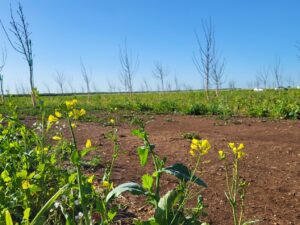
Identification of Genetic Markers
Prior to planting the trees, Wheeler-Dykes said they already had a lot of information on the trial selections from identification of genetic markers along with greenhouse and small field tests. The most promising selections go on to the small-scale commercial trials. Walnut breeders have identified genetic markers and alleles associated with desirable characteristics, such as higher yield, lateral bearing, disease resistance and improved kernel quality.
“We have a good sense of their potential before they are planted,” Wheeler-Dykes said.
She said some selections are showing yield potential with early precociousness, meaning growers could have earlier returns on the investment of planting a new orchard. She said they are looking for tree response to freezing temperatures early or late in the growing season and are identifying issues with pest pressure, disease and heat.
The selections are planted with production controls of Howard, Solano, Durham and Wolfskill in a randomized complete block design with three blocks. Chandler trees are planted in alternate rows as a buffer between varieties. All are grown on RX1 rootstock.
Wheeler-Dykes said the walnut varieties will be compared to Chandler, with an eye on vigor, growth of trunk circumference, damage due to frost or sunburn. She said they will also be measuring stem water potential both during high heat and normal temperatures to see how the different varieties handle heat stress. The trees will also be observed for walnut blight resistance and reaction to insect pest pressure.
“We are fortunate to have support from Chico State and the California Walnut Board for this trial. Their support has allowed us to hire a team of CSU students to learn about variety evaluation and general orchard practices, collecting data and making observations. Karla Caldera is also doing her master’s thesis on the walnut variety trial with Chico State and is generating even more data for growers to consider when they are ready to plant new orchards.”
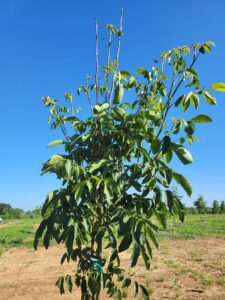
Unique Partnership
Chico State’s farm has been the site of several walnut variety trials over the years. Billy Ng, California Walnut Board vice president of industry and government affairs, said this unique partnership with the school provides the walnut growers in the area with a close look at upcoming walnut varieties through all stages of growth.
“Our primary focus with these trials is to identify high quality and high yield,” Joe Grant, California Walnut Commission’s director of research, said. He said the walnut industry has faced challenges with kernel quality and shelf life, and California Walnut Board is pleased with the research emphasis on quality at the UC Walnut Improvement Program under the leadership of Brown.
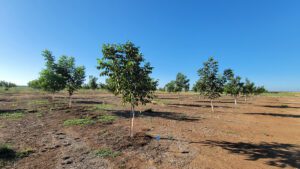
The Walnut Improvement Program develops improved scion cultivars and rootstock with a range of harvest dates, improved pest and disease resistance, increased yield and precocity, good kernel color stability, shelf life and edible yield.
Grant said kernel quality is vital for California walnut growers to compete in the world market. China is a competitor in the global market and produces walnuts with large kernels, but they tend to have very thin shells.
The trials are meant to show which Walnut Improvement Program field trial selections will not make the cut. Issues may be varieties that produce dark kernels or are difficult to shell out.
Grant said they also want a “grower-friendly” tree with architecture that allows sufficient light penetration for lower branches. Trees should also be reasonably upright and respond well to training. He said they are also not looking for immense size, but a more moderate tree that will shake well.
While the breeding program has benefited from identification of DNA markers for specific traits, it still takes time to grow trees to maturity and evaluate their unique characteristics.
Brown said that use of genetic markers when making walnut breeding selections enables them to “throw out the trash.”
“What makes a good cultivar is complicated. But we do know what we don’t want,” Brown said. Those traits include terminal bearing and late leafing. As the trees begin to produce, they want yield and quality.
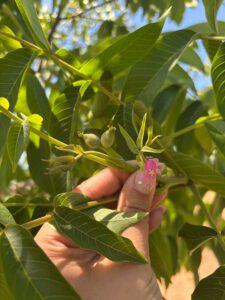
Hitting Harvest Window
Grant said the Walnut Improvement Program is working to build varieties that hit a harvest window from early September to late October with new varieties with more marketable qualities to replace older walnut varieties.
He acknowledged there is presently low demand for new trees, but as markets evolve, there will be demand for high-quality walnut kernels.

Cecilia Parsons
Cecilia Parsons has lived in the Central Valley community of Ducor since 1976, covering agriculture for numerous agricultural publications over the years. She has found and nurtured many wonderful and helpful contacts in the ag community, including the UCCE advisors, allowing for news coverage that focuses on the basics of food production.
She is always on the search for new ag topics that can help growers and processors in the San Joaquin Valley improve their bottom line.
In her free time, Cecilia rides her horse, Holly in ranch versatility shows and raises registered Shetland sheep which she exhibits at county and state fairs during the summer.






